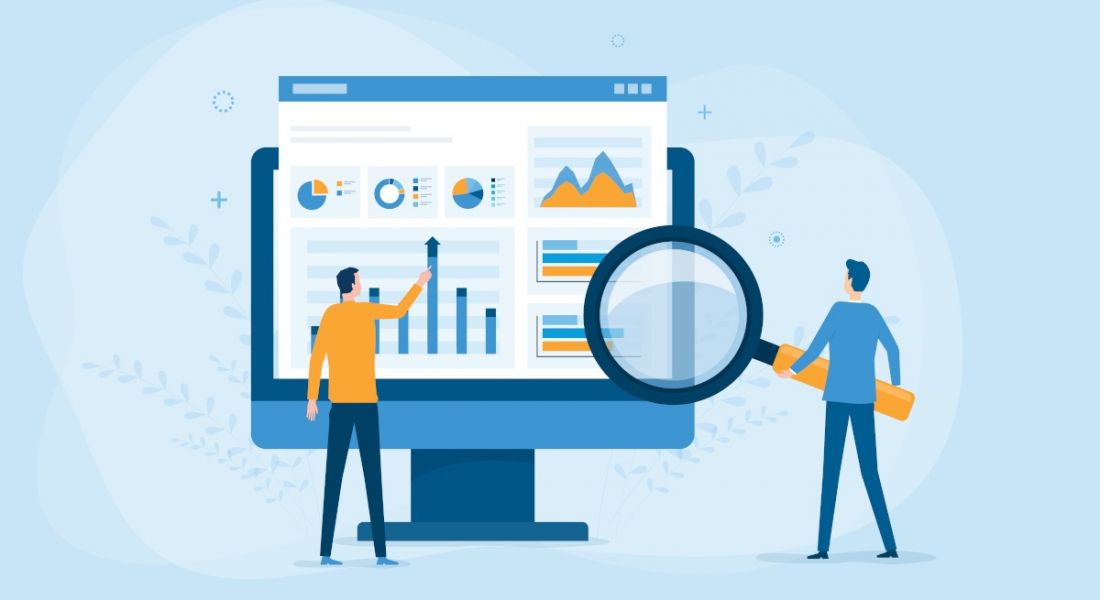Code Institute’s Daragh Ó Tuama explores some of the tools that data analytics professionals need to know about and how to choose the right one for their needs.
Every day, large databases produce and store millions of pieces of data. Scientists and data analysts later use the gathered data to track trends and make forecasts.
Data analysis is a hot topic nowadays, but few people understand what it is or how it is done. Establishing a clear screening process for the best data analysis tools is difficult because there are so many diverse big data applications and purposes.
Here are some important factors to take into account when choosing the best data analysis tools.
Match perfectly with your goals
The analytics tool ought to accommodate both current and foreseeable business needs.
Keep a record of the primary goals for your business as well as the anticipated organisational outcomes.
Then, select an analytics solution that offers you information about available data and reporting capabilities to assist you in achieving your business objectives.
Keep an eye on expenditure
Before choosing one, you must fully comprehend the costs associated with the data analysis software you are evaluating, including subscription costs and other unstated costs.
In addition, before making a purchase, you should know the various pricing models for analytics products.
Examine the customer experience
An easy-to-use analytics user interface should be available for many people.
Even for non-technical people, dashboards and reports must be simple to produce and understand.
Support with integrations
When selecting an analytics tool, you must consider if a solitary or embedded solution is advantageous to the company.
Integrated solutions enable you to access analytics through applications that your audience already knows, whereas independent solutions offer you several possibilities.
Observe scalability
You can start small with scalable analytics solutions and significantly increase as your organisation expands. These pay-as-you-go options can help early-stage enterprises obtain a competitive advantage during intense development.
Because every business has unique requirements, you must select an analytics system that works for you.
It should also be considered whether technology may be enhanced or adjusted to meet present and long-term needs.
Identify security standards
You must evaluate the security of your vendor and analytics provider to ensure that the necessary security protocols are protecting your data. Establish uniform security policies and protocols at all levels to limit who has access to what data.
5 top data analysis tools
Python
Python has now been developed for use in data analysis in addition to its original purpose of being an object-oriented programming language for software and web development.
It is an advanced data analysis tool with an extensive library of user-friendly libraries for all areas of scientific computing. Free and open-source, Python is a straightforward programming language.
NumPy, one of Python’s initial data science libraries, was the foundation for Pandas, the language’s data analysis module.
Analysts can integrate data from Excel spreadsheets into processing sets for time-series analysis because Pandas supports many file types.
As a result, Pandas is a fantastic tool for various tasks, including data cleansing, masking, merging, indexing and grouping.
Other libraries, such as SciPy, Scikit-learn and Statsmodels, are used in statistical modelling, mathematical approaches, machine learning and data mining.
Matplotlib, Seaborn, and VisPy are packages for visual analysis and data visualisation. Python is the most widely used programming language and has a sizable developer community.
Oracle Analytics
Oracle Analytics Cloud is a cloud-based business intelligence and analytics solution. Its primary goal is to assist large organisations in migrating their antiquated systems to a new cloud platform.
Users can use its extensive analytics features to perform everything from creating simple infographics to extracting insights from data using machine learning algorithms.
Oracle Analytics extracts information from reliable public sources to add new columns to your data. This extra information enhances your data’s analysis capabilities.
In addition, Oracle can generate text reports from your visualisations with only one click, greatly streamlining the delivery of visualisations. These capabilities enable speedy insight generation and immediate report sharing.
Google Analytics
Google Analytics is a powerful data analysis tool for analysing website traffic and user behaviour. In addition, users can use Google Analytics for streaming analytics without the need for data engineers to build data pipelines, in contrast to other data analysis tools that require data cleansing before discovering insights.
A short piece of JavaScript code is used to extract the data from the website and evaluate it according to business needs.
Today, organisations in the media and entertainment industry, e-commerce and fintech rely on website data to enhance their goods and services and drive revenue development.
With just a few clicks, you can obtain insights with Google Analytics’ special capabilities. Google Analytics has been a go-to tool in many organisations because it doesn’t require users to learn any query languages.
R
R is the most widely used computer language for statistical modelling, visualisation and data analysis. Statisticians mostly use it for machine learning, big data and statistical analysis. It is a free, open-source programming language with several user-written package extensions.
R has a challenging learning curve and calls for some programming knowledge. But in terms of syntax and coherence, it’s a great language.
R excels at exploratory data analysis, a technique for assessing data sets to summarise their key characteristics, typically using visual methods.
The development community for R is sizable. For example, to examine user behaviour concerning status updates and profile pictures, Facebook employs R.
Microsoft Power BI
Microsoft Power BI is an excellent business intelligence software. Users can build reports, visualisations and dashboards with it. In addition, users can combine a group of dashboards and reports into a Power BI app for easy deployment. Users may also use automated machine learning models connecting with Azure Machine Learning.
While many data analysis tools became obsolete, Microsoft ensured that Power BI continued to evolve and meet changing business needs.
Power BI, which began as a simple analytics tool, is now packed with machine learning capabilities for sentimental analysis and seamlessly interacts with other platforms to streamline analytical operations.
Power BI turns information into action by utilising Microsoft Power Platforms to create business applications.
Organisations use data analysis extensively to understand customer behaviour and develop strategic business goals.
This explains why there are numerous tools available online. With the best tools on this list, you can easily perform data analysis on the gathered data to get rapid answers and new perspectives.
Daragh Ó Tuama is the digital content and production manager of Code Institute. A longer version of this article previously appeared on the Code Institute blog.
10 things you need to know direct to your inbox every weekday. Sign up for the Daily Brief, Silicon Republic’s digest of essential sci-tech news.




